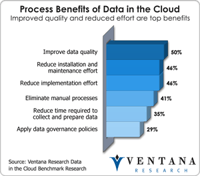Salesforce is a global software-as-a-service (SaaS) company to be reckoned with. The swarming crowds at its Dreamforce event last week were estimated to exceed 90,000. The company is rapidly growing an ecosystem that includes Sales, Service and Marketing Clouds; Force.com for building applications; and Data.com for storing data in the cloud centrally for use across Salesforce products. It is also focusing on social computing, as I outlined at the beginning of the event. Hundreds of Salesforce...
Read More
Topics:
Master Data Management,
Sales Performance,
Salesforce.com,
Social Media,
SnapLogic,
Zyme Solutions,
IT Performance,
Operational Performance,
Business Analytics,
Business Intelligence,
Business Performance,
CIO,
Cloud Computing,
Customer & Contact Center,
Data Governance,
Data Integration,
Governance, Risk & Compliance (GRC),
Informatica,
Information Builders,
Information Management,
Data,
data integrity,
database.com,
Kapow
Salesforce.com’s 2011 Dreamforce conference is under way. If you’re in sales and you use the company’s application, here’s how to gain the most value from your time at the conference.
Read More
Topics:
Sales,
Sales Performance,
Salesforce.com,
Social Media,
Marketing,
Marketo,
Merced Systems,
Qvidian,
Revenue Performance,
Sales Force Automation,
Sales Operations,
Zilliant,
Zyme Solutions,
Operational Performance,
Business Analytics,
Business Collaboration,
Business Mobility,
Business Performance,
Cloud Computing,
Customer & Contact Center,
Financial Performance,
Workforce Performance,
Callidus Software,
Camelon Software,
CFO,
ChannelInsight,
Cloud9 Analytics,
CMO,
CRM,
Sales Performance Management,
SFA,
Varicent,
Vendavo,
Xactly
Companies (especially in high technology) that sell through an indirect channel face a difficult challenge because global sales channels are complex, fragmented and changeable, with different business practices and customs than direct channels. Keeping track of which products have sold in and sold through which partners can be a difficult task. Unless a company is working with only a handful of channel partners, just collecting the data is time-consuming. Not only is the data complex, much of...
Read More
Topics:
Sales,
Sales Performance,
Salesforce.com,
Human Capital Management,
Zyme Solutions,
Operational Performance,
Business Analytics,
Business Collaboration,
Financial Performance,
Governance, Risk & Compliance (GRC),
channel,
CRM










